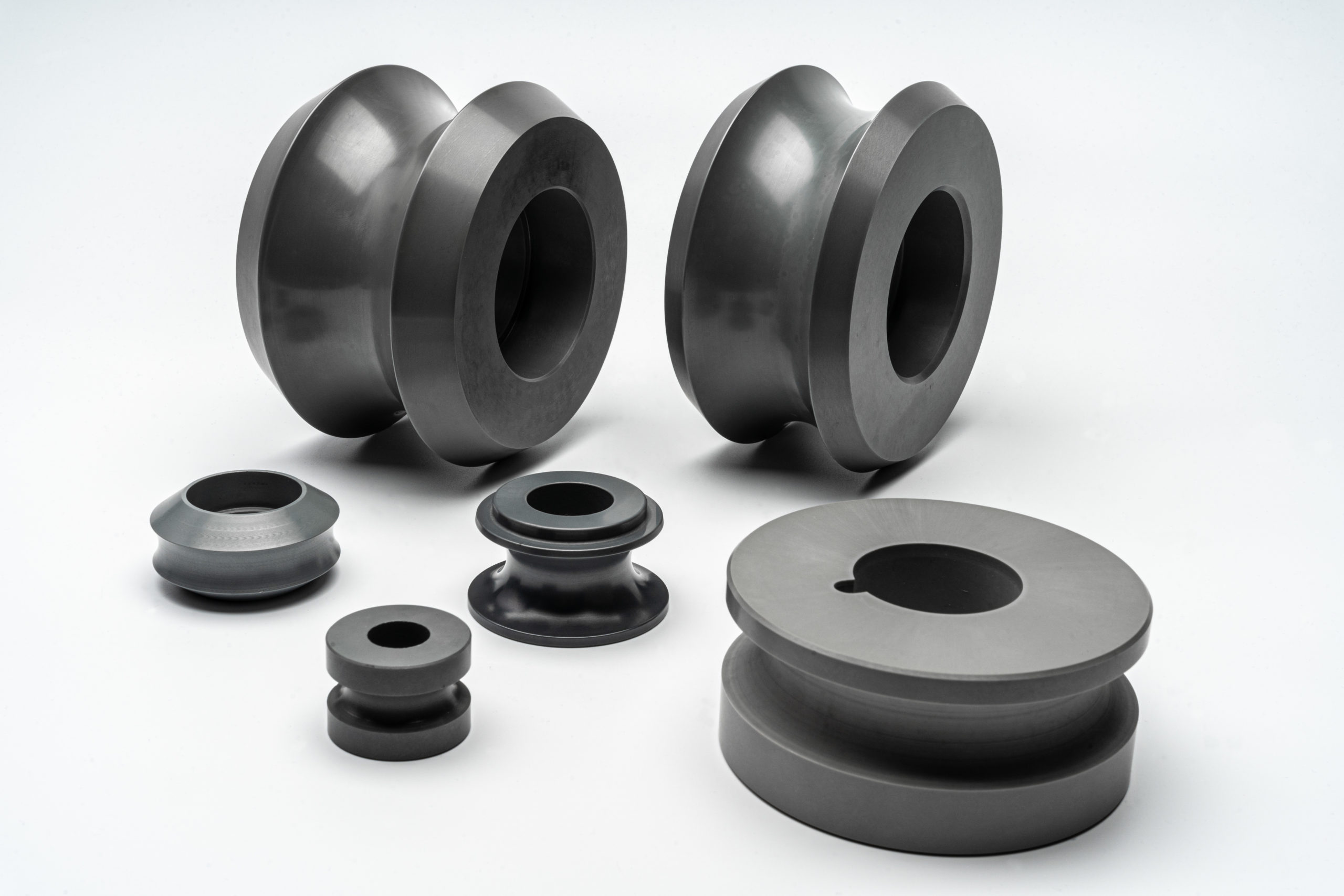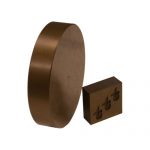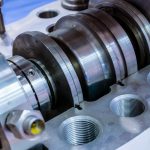Updated 17/03/2022:
Seam welding equipment is used to join the faying surfaces of unfinished cylindrical profiles (pipes, tubes, etc.). It exploits a similar principle to standard arc welding to produce a durable, longitudinal weld along the full length of a tubular workpiece. Ensuring this solid-state bond is uniform demands high process automation using high strength forming components. Turning rolls, or pipe rollers, are the key component differentiating seam welding from other joining methods like spot welding.
Welding rollers, or squeeze rollers, are integral components in typical high-frequency electric resistance welding (HF-ERW) systems. They perform the dual function of applying pressure and conveying the workpiece through the welding machine. Forged steel rollers are commonplace in longitudinal seam welding despite their comparatively poor performance and service life to technical ceramics like silicon nitride (Si3N4).
Silicon nitride ceramic materials are deployed in a wide range of application areas, with their high strength and hard wearing nature combining with their excellent corrosion resistance. They are used for fabricate cutting tools and critical components for gas turbines. But one of the growing applications of silicon nitride is welding rollers.
Outlining the Basics of Welding Rollers
Electric resistance welding (ERW) encompasses a range of joining techniques where faying surfaces are heated to the point of fusion via electrical resistance. This is conducted with a welding head that applies both sustained pressure and a constant electrical current, generating friction while exploiting the material’s temperature coefficient. With longitudinal welding, the electrical current is typically applied by a set of copper electrodes while pressure is applied by a series of welding rollers.
Aluminium, brass, and stainless steel tubes are generally formed from a hot-rolled sheet that is trimmed and formed into distinct cylindrical profiles with faying surfaces in the same plane. This profile is passed into the conveyor of the HF-ERW welder where it is squeezed by the welding rollers and conveyed with surgical precision through the work coil or beneath the contact electrodes of the welder. This ensures an ultra-precise weld point along the entire length of the profile.

Syalon 101 Weld Rolls
Challenges Facing Welding Rollers
This high-temperature process is mechanically intensive, requiring extremely strong and wear resistant materials that can withstand severe thermal shock. Although stainless steel welding rollers will provide significant improvements in terms of precision, they will fail due to thermal and mechanical breakdown far quicker than silicon nitride. The electrical conductivity of stainless steel welding rollers can also be problematic, contributing to material pick-up problems that are commonplace in non-ferrous metal joining.
Silicon nitride welding rollers vastly outperform steel alternatives, with significantly improved thermal shock resistance and strength, notwithstanding the material’s non-conductivity. Syalon 101 is a proprietary silicon nitride from International Syalons, featuring a compressive strength of up to 3,500 MPa and a thermal shock resistance of Δ900°C. This exceeds the requirements for seam welding, providing a number of advantages over conventional welding rollers, including better product quality, fewer weld failures, reduced roller maintenance requirements, and reduced cooling times. Subsequently, silicon nitride welding rollers can reduce HF-ERW power by up to 30% and can outperform steel components by a factor of up to 12x.

Tube forming process – Image Credit: Shutterstock
Silicon Nitride Welding Rollers from International Syalons
International Syalons specialises in the generation of silicon nitride products for heavy-duty industrial applications, providing value-added solutions for demanding and continuous processes. If you would like any more information about the properties of Syalon 101 or have any general queries about silicon nitride in industrial spaces, simply contact a member of the International Syalons team today.
Originally published on 19/08/2019


